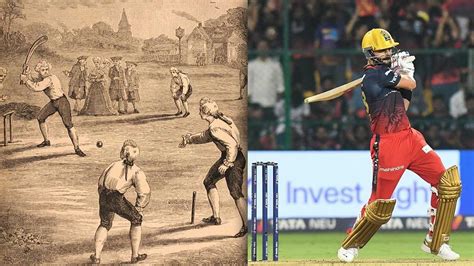Explore the essentials of baseball scouting, key metrics, the role of technology, impact on player development, success stories, and frequently asked questions.Baseball Scouting: How Players Are Evaluated
In the fast-paced world of baseball, uncovering talent goes beyond mere observation; it’s a science that combines skill, metrics, and technology. Baseball scouting plays a pivotal role in identifying potential stars, analyzing their performance, and shaping their development. With a keen eye for detail and an understanding of key evaluation metrics, scouts are tasked with ensuring that no rising star goes unnoticed. In this article, we will delve into the fundamentals of baseball scouting, explore the technological advancements reshaping the game, and highlight the profound impact scouting reports have on player progression. Join us as we celebrate the successes of players who owe their careers to effective scouting, and provide answers to common questions about this essential component of America’s pastime. Discover how the intricate art of baseball scouting continues to evolve and drive the game into the future.
Understanding The Basics Of Baseball Scouting
Baseball scouting is a critical component of player evaluation, playing a significant role in the development of talent within the sport. Scouts, who are trained professionals with a keen eye for talent, assess players through a variety of means, including live games, statistics, and personal interviews. The fundamental goal of scouting is to identify players who possess the potential to succeed at higher levels of competition.
The process typically begins at the amateur level, where scouts observe high school and college players. They evaluate various aspects of a player’s performance, such as batting average, on-base percentage, pitching velocity, fielding ability, and overall athleticism. Moreover, scouts often look beyond just physical skills; they also assess a player’s mental toughness, work ethic, and attitude, all of which are crucial for success in professional baseball.
Additionally, the geography of scouting has expanded, thanks to a global interest in baseball. Today, scouts often travel internationally to discover emerging talent, allowing teams to maintain a diverse roster that can elevate their competitive edge.
In essence, baseball scouting encompasses both objective and subjective assessment methods, creating a holistic view of potential players. This multifaceted evaluation process helps teams make informed decisions that can influence their future and the game’s landscape itself.
Key Metrics Used In Baseball Scouting Evaluations
In the world of Baseball Scouting, data-driven evaluations have become pivotal in identifying talent and potential. Scouting metrics can be broadly categorized into traditional stats and advanced analytics, both of which provide insights into a player’s abilities and potential impact on the field.
Traditional Statistics
- Batting Average (BA): Measures a player’s hitting performance, calculated by dividing the number of hits by the number of at-bats.
- On-Base Percentage (OBP): Indicates how often a player reaches base, combining hits, walks, and hit-by-pitches against total plate appearances.
- Slugging Percentage (SLG): Evaluates the power of a hitter by calculating total bases divided by at-bats, factoring in extra-base hits.
- Earned Run Average (ERA): Reflects a pitcher’s effectiveness by determining the average number of earned runs allowed per nine innings pitched.
Advanced Metrics
- Wins Above Replacement (WAR): A comprehensive statistic that quantifies a player’s overall contributions to their team in terms of wins compared to a replacement-level player.
- Fielding Independent Pitching (FIP): Focuses solely on the outcomes a pitcher can control (strikeouts, walks, home runs) to gauge their effectiveness.
- Exit Velocity: Measures how fast the ball leaves the bat after contact, providing insights into a hitter’s power potential.
- Spin Rate: Indicates how much a pitch spins, which affects its movement and can reveal a pitcher’s effectiveness and deception.
Understanding these metrics is essential for scouts when evaluating player potential. With the integration of technology in Baseball Scouting, many teams now have access to detailed analytics that enhance traditional scouting reports, ultimately leading to more informed decisions in player evaluations and acquisitions.
The Role Of Technology In Modern Baseball Scouting
In recent years, the landscape of Baseball Scouting has evolved dramatically due to advancements in technology. Tools that were once merely supportive are now integral to the evaluation process, providing scouts and teams with a deeper understanding of player potential and performance.
One of the most significant advancements is the use of data analytics. Organizations now utilize various metrics gathered from gameplay, including exit velocity, spin rate, and launch angle. These metrics help scouts go beyond traditional observations, allowing them to make more informed decisions based on quantitative data.
Another innovation is the implementation of video analysis. High-definition cameras and software can break down a player’s mechanics frame by frame, highlighting strengths and pinpointing areas that require improvement. This level of scrutiny helps players enhance their skills and allows scouts to assess talent from different angles.
Additionally, wearable technology has entered the realm of Baseball Scouting. Devices that track players’ physical performance provide insights into a player’s health, fitness levels, and overall stamina. This real-time data helps teams assess durability, critical in evaluating a player’s long-term viability.
Online scouting platforms have changed how scouts connect with talent. These platforms aggregate data, scouting reports, and highlight reels, making it easier for scouts to share assessments with coaches and decision-makers, thereby streamlining the recruitment process.
The role of technology in modern Baseball Scouting cannot be understated. As data continues to play a pivotal role in evaluations, teams that embrace these innovations will likely find themselves ahead in the quest for uncovering and developing the next generation of baseball talent.
How Scouting Reports Impact Player Development
The significance of scouting reports in Baseball Scouting cannot be overstated. These documents serve as a crucial tool for organizations looking to refine their player development strategies. Scouting reports provide a comprehensive analysis of a player’s skills, strengths, weaknesses, and potential, helping coaches and managers make informed decisions about training and development programs.
One of the primary ways scouting reports impact player development is by identifying specific areas for improvement. For instance, if a player’s report highlights a weakness in batting mechanics, coaches can tailor drills and exercises to address this issue directly. This targeted approach allows players to focus on their development in a more structured manner.
Additionally, scouting reports offer insight into a player’s mental attributes, such as their work ethic, attitude, and ability to handle pressure. Understanding these aspects enables coaching staff to provide the necessary support, both mentally and physically, as players navigate the challenges of advancing in their careers.
Moreover, effective Baseball Scouting processes ensure that talent is not only recognized but also nurtured over time. Talent development programs within teams often align with the findings of scouting reports, ensuring that players receive the right guidance based on tailored assessments. This alignment fosters an environment where players can thrive and reach their maximum potential.
Scouting reports are invaluable in shaping the trajectory of a player’s career. By providing detailed evaluations and focusing on key development areas, they play a pivotal role in the overall growth and success of players in the world of baseball.
Success Stories: Players Discovered Through Effective Scouting
Throughout the history of baseball, numerous players have made their mark in the sport thanks to the efforts of dedicated scouts who recognized their potential. Baseball scouting plays a crucial role in identifying talent, and the success stories of these players serve as a testament to the efficacy of the scouting process.
One notable example is Mike Piazza, often considered one of the greatest catchers in MLB history. Despite being drafted in the 62nd round in 1988, he was identified by scout Gus Dugas, who saw potential in Piazza that others overlooked. This initial scouting evaluation led to Piazza’s remarkable career, culminating in his induction into the Hall of Fame in 2016.
Another impressive story is that of Albert Pujols. Drafted in the 13th round of the 1999 MLB Draft, he was discovered by scout Johnny Almaraz while playing in a wood-bat league. Pujols went on to become a three-time MVP and is regarded as one of the best hitters of his generation.
Additionally, Max Scherzer, a multiple-time Cy Young Award winner, was initially overlooked by several teams prior to college. Scout Kevin Malone played a pivotal role in noticing Scherzer’s talent, leading to his eventual selection in the first round. His career has since showcased the importance of comprehensive baseball scouting methods.
These stories illustrate how effective scouting can uncover hidden gems that contribute significantly to a team’s success. Each player, handpicked by vigilant scouts, highlights the impact that thorough and insightful evaluations can have on the landscape of professional baseball.
Frequently Asked Questions
What is the primary purpose of baseball scouting?
The primary purpose of baseball scouting is to evaluate players’ skills, abilities, and potential to succeed at higher levels of competition.
What key attributes do scouts look for when evaluating players?
Scouts typically look for attributes such as hitting ability, pitching mechanics, defensive skills, speed, and overall athleticism.
How do scouts assess a player’s mental makeup?
Scouts assess a player’s mental makeup by observing their approach to the game, ability to handle pressure, work ethic, and how they interact with coaches and teammates.
What role does technology play in modern baseball scouting?
Technology plays a significant role in modern baseball scouting by providing advanced analytics, video analysis, and performance metrics that help scouts make informed decisions.
How do scouts gather information on players?
Scouts gather information on players through game observations, statistics, reports from coaches, and by attending showcases and tournaments.
What is the importance of player health in scouting evaluations?
Player health is crucial in scouting evaluations because injuries can affect a player’s performance, longevity, and future potential, making it a key factor in decision-making.
What are some common misconceptions about baseball scouting?
Common misconceptions about baseball scouting include the belief that subjective opinions alone determine player evaluations; in reality, a combination of quantitative data and qualitative assessments are used.









